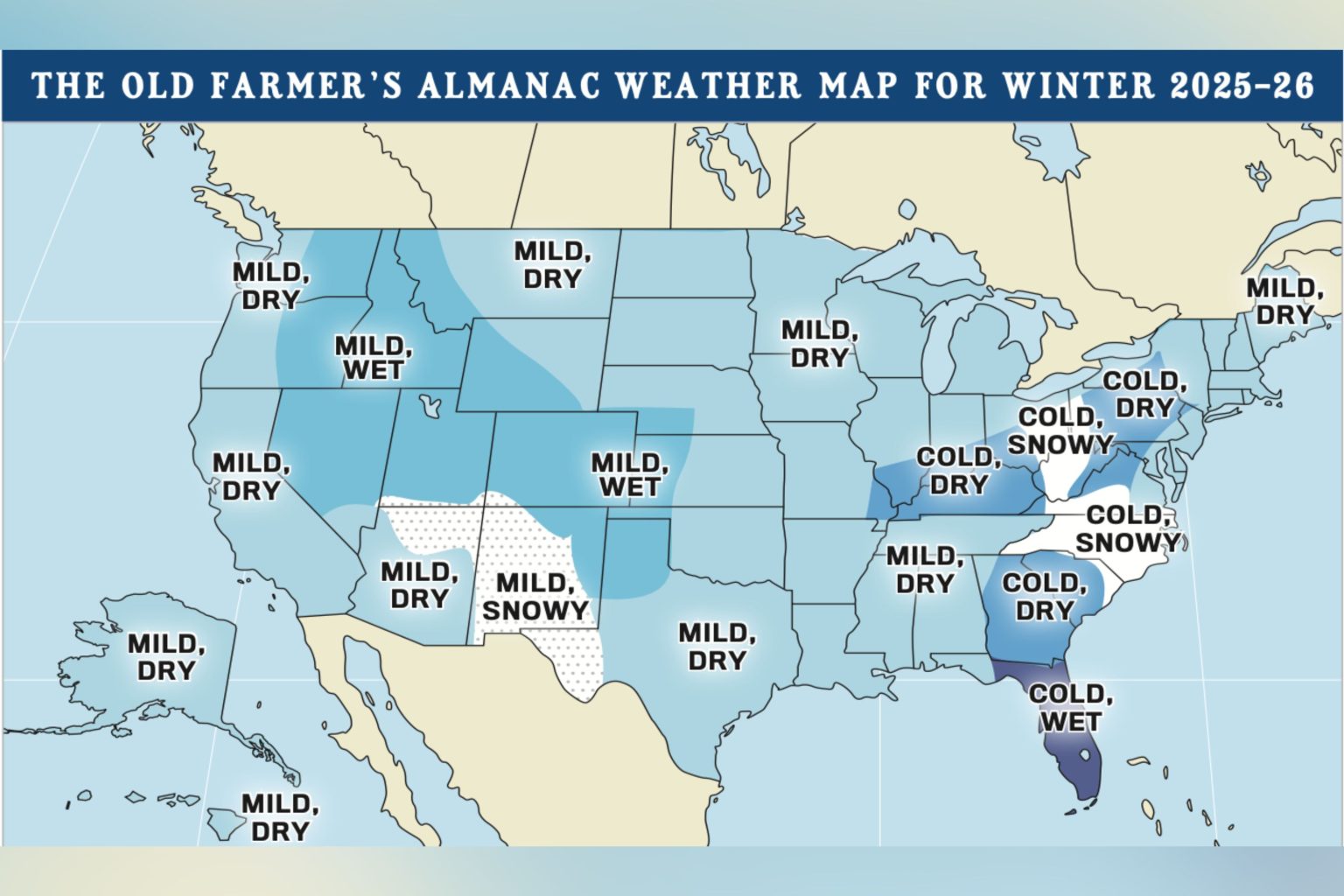The Old Farmer’s Almanac Predicts Unusual Winter for Florida in 2025
The Old Farmer’s Almanac, America’s longest-running periodical dating back to 1792, has released its winter forecast for 2025, describing it as “mostly mild” for most of the United States—with Florida being a notable exception. The Sunshine State is predicted to experience colder-than-average temperatures and above-normal precipitation, making it an outlier in the national forecast. This projection comes from the Almanac’s time-tested methodology that combines three scientific disciplines: solar science (analyzing sunspot activity), climatology (studying weather patterns), and meteorology (examining atmospheric conditions). For Floridians accustomed to mild winters that attract snowbirds from northern states, this forecast suggests a potential shift from the norm, possibly affecting everything from agriculture to tourism in a state that typically markets itself as a warm winter haven.
While Florida prepares for an unusually chilly and wet winter, the Almanac identifies only a few other regions that will share in the colder-than-average conditions, specifically the Appalachians and the Ohio Valley. The publication also predicts that the intermountain region and eastern Desert Southwest will join Florida in experiencing above-average precipitation. This targeted forecast creates an interesting weather divide across the country, with most areas expected to enjoy milder conditions while these specific regions prepare for more challenging winter weather. The Almanac’s detailed regional breakdown helps communities prepare differently based on their location, with Floridians perhaps needing to dust off heavier jackets and umbrellas that typically remain stored away during the winter months.
Contrary to Florida’s wet outlook, the Almanac forecasts an overall drier-than-usual winter for most of the country, with “extended dry stretches likely” across many regions. Snowfall is expected to be “near or below normal for most areas,” though the Carolinas, southern Appalachians, eastern Ohio Valley, southern Rockies, and eastern Desert Southwest could see heavier snowfall than usual. The Almanac offers a practical reminder that even a “mild” winter is still winter, advising Americans to “plan (and dress!) accordingly” and cautioning those in snow-prone areas not to “retire that shovel just yet.” This balanced perspective acknowledges that while the overall trend may be milder, winter weather remains unpredictable and potentially impactful for daily life and regional infrastructure.
The Old Farmer’s Almanac isn’t the only publication making winter predictions. Its competitor, the similarly named but separate Farmer’s Almanac, has issued its own forecast with somewhat different projections. The Farmer’s Almanac anticipates the coldest outbreaks will affect areas from the Northern Plains to New England, with significant snow risks across the Pacific Northwest, Great Lakes, and mid-Atlantic regions. It specifically highlights mid-January and mid-February as periods for the coldest outbreaks, while suggesting some areas could see cold and snow as early as September. These competing forecasts highlight the complexity of long-range weather prediction and give Americans multiple perspectives to consider when planning for the coming winter months.
Sarah Perreault, managing editor of The Old Farmer’s Almanac, has previously described the publication to Newsweek as “the original guide to living well,” known for its “wit, wisdom, and solid advice that’s relevant to real life.” She emphasized the Almanac’s commitment to celebrating core values while entertaining families “with a healthy degree of humor and a sense of optimism.” This approach has helped the publication maintain its relevance for over two centuries, becoming a familiar autumn arrival in stores across America. Despite being brand new each year, the Almanac maintains its traditional approach and format, offering a sense of continuity and reliability that many readers appreciate in an ever-changing world.
The Old Farmer’s Almanac continues its tradition of annual releases, providing Americans with weather forecasts, planting charts, astronomical data, and lifestyle advice. For Floridians specifically, the upcoming winter may require more preparation than usual if the Almanac’s predictions prove accurate. The forecast of colder temperatures and increased precipitation could affect everything from citrus crops to winter tourism, potentially requiring adaptations from both residents and businesses. As with all long-range forecasts, time will tell how accurate these predictions prove to be, but the Almanac’s long history and scientific approach give it credibility among many Americans who have relied on its guidance for generations. Whether you’re in Florida preparing for unusual chill or elsewhere enjoying milder conditions, the Almanac’s message remains consistent: be prepared for whatever winter brings your way.















